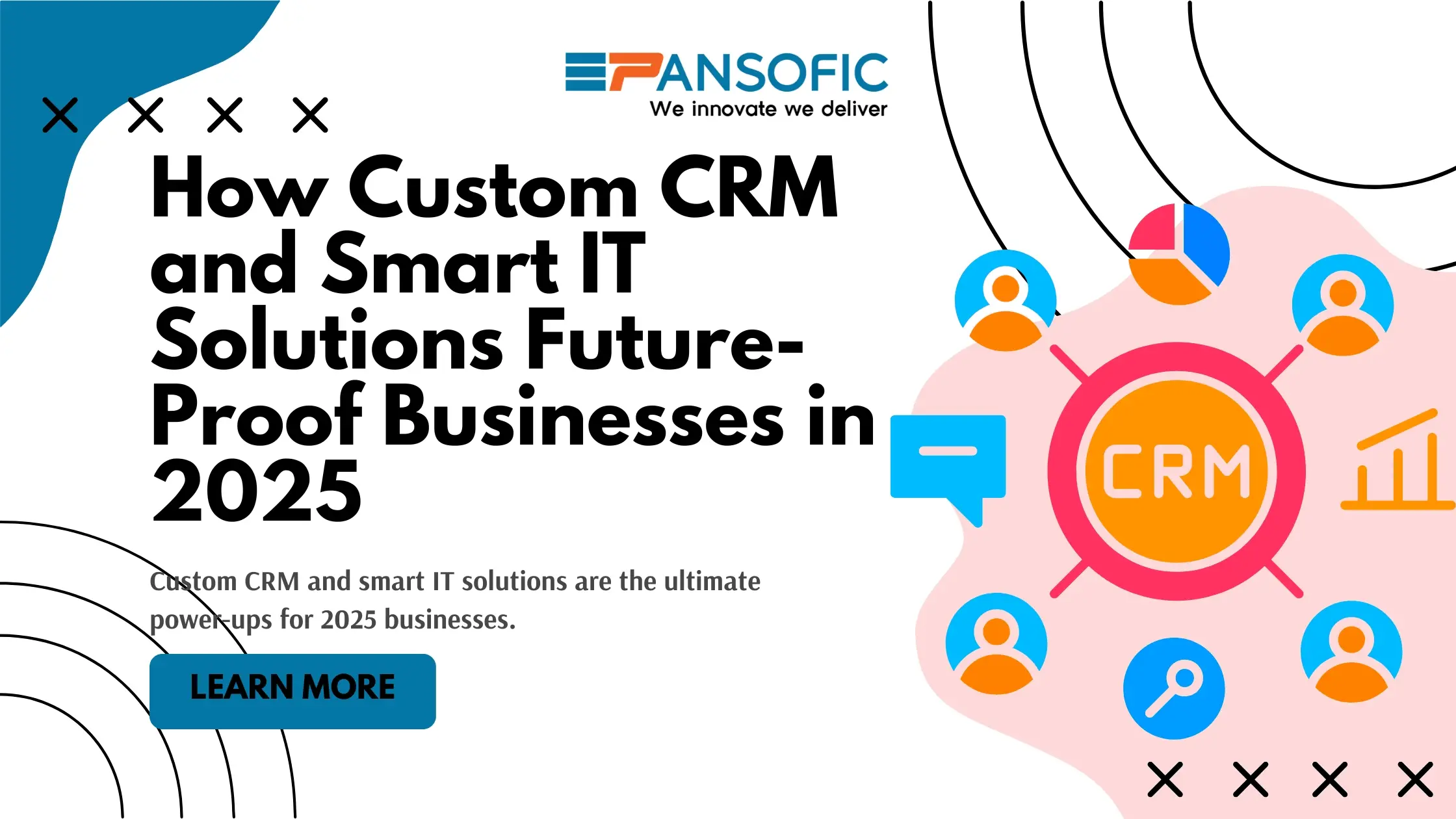Custom CRM and smart IT solutions are the ultimate power-ups for 2025 businesses. They streamline workflows, personalize customer journeys, and automate the boring stuff—so teams can focus on growth. By integrating AI, data analytics, and scalable tech, companies future-proof their operations, stay agile, and crush competition in an ever-evolving digital economy.

In 2025, your business technology stack will probably look like this:
You are digitally enabled on paper. In the real world, you’re saying stuff with duct tape, and the cracks appear at the most inconvenient points.

Sound familiar? You're not alone.
Gartner suggests that 75% of CRM projects fail because of poor acceptance and misalignment with business operations.
The problem isn't technology. It is the manner in which companies end up paying to have off-the-shelf software that was never, in fact, designed to suit their workflows.
We have been at Pansofic Solutions, where we have witnessed how firms have made the transition to specific CRM and integrated IT solutions:
And it is not merely the maintenance of technology but the creation of a defensible advantage that your competitors cannot re-create in a single overnight.
This isn't theory. In these steps of this guide, you will go through:
At the end, you will have all the information about what it would require to break the cycle of renting efficiency and owning it.
CRMs of the shelf seem pretty at first glance: easy to install, simple with features, with big household names behind them.
Your marketing automation system gathers leads and is not linked to sales. Finance is used to monitor revenue, which cannot be viewed in real time by the sales team. Operations do not know anything about customer churn and its revenue predictions.
Outcome: judgments are drawn based on piecemeal, obsolete information.
You are purchasing extras that you will not be using. In the cases, most of businesses utilize dissimilar to a fifth of the potential of CRM. It is equivalent to spending on a private jet and then using it as a parked office.
People abandon the tools when they do not fit into workflows. And in case adoption fails, ROI goes out the window.
Forrester discovered that companies where CRM was underutilized cost the company an average of $1,500 per employee, per year.
Placeholder Case Study:
Client X was spending on Salesforce licenses at 120k per year. With a bespoke CRM built to fit their workflow, they saved 60 per cent on SaaS strategies and saved 40 minutes on the sales process.
Off-the-shelf tools are designed to attract the masses. But your business does not require mass appeal; it requires fit.
So why now? What makes 2025 different from 2015 or 2020?
Three forces are colliding:
1. AI Everywhere
CRMs are no longer data dumping vaults. They are becoming active AI copilots:
2. Process-First Design
Businesses are also finding out that the software will be suited to the working processes and not the other way around. This consumerist trend of changing the challenge of feature-first to process-first years of consumer-driven design is creating custom builds.
3. Unified Tech Stacks
A CRM can't live in a silo. It’s currently the center of genius, with lingering web forms, ERP, HR, finance, and customer success to one point of truth.
Stat: There is a 2.5x improved customer retention rate with businesses that have integrated CRMs (Forrester).
Placeholder Data:
Client Y dropped churn by 22% in 90 days since integrating their CRM with their marketing and operations.
Through a process called truncation, businesses will cease answering the question of Which CRM should we buy? in 2025. and begin to ask the question What CRM should we build?
We at Pansofic Solutions have developed a framework that is applicable in any industry and company size.
Here's the 5-step roadmap:
Identify workflows that are in place, locate bottlenecks, and discover the usage of wastage.
Sample: Sales representatives will spend 30 percent of the week processing data by hand.
Sketched the integrations, automations, and data paths that will transform mercies into lucidity.
Example: Website forms, CRM, automated follow-up sales dashboard.
Construct only what is necessary for the team. Lose bloated features, consider ROI.
Offer onboarding, playbooks, and real-time support. Adoption is not optional; it is the blood of ROI.
Technology evolves. A CRM is not a product, but rather a living system that expands with your business.
Lead Magnet: This is where readers can download a CRM Implementation Checklist.
Case Studies, Proof It Works
This is where the theory comes into reality. True-to-life examples may strike more sharply, even anonymized.
B2B Manufacturer
E-commerce Brand
Service Company
A CRM is just the hub. When all the pieces slot into place, that is when the moat is constructed:
Stat: Firms that have integrated systems expand 30% compared with ones on disconnected tools.
Client Z combined CRM and ERP. The 5 days reported took 5 minutes to report.
That is what distinguishes between digitally enabled and digitally dominant companies.
In the future, the decade will be characterized by three trends:
CRMs that not only store but also make decisions, recommending next best actions, automate outreach, and prioritize leads.
Forget about locked SaaS solutions. The future lies in modular, composable systems constructed out of building blocks, which are malleable.
Companies will have to work through whether to focus on compliance (GDPR, AI regulation) or to spoil meaningful locations with customer-centered experiences.
In the year 2030, companies that will have failed to have a tailor-made CRM + built-in IT system will be playing at a perpetual handicap, just like we witnessed in the early 2000s with regard to businesses that had failed to have websites.
Here's the truth:
Ready to build your moat? [Book a strategy session at Pansofic Solutions].